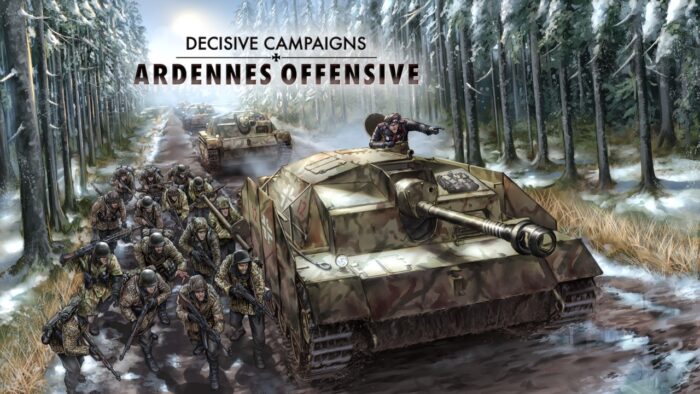Grogheads Interviews! Vic Reijkersz of VR Designs, Round 2
Not long after VR Designs released the critically acclaimed strategy masterpiece Shadow Empire, we had the chance to sit down with its creator,Victor Reijkersz, to pick his brain. As huge fans of all titles released by VR Designs, we just had so much to talk about that we simply could not fit it all into one exchange. Since our first session, VR Designs went and released another fantastic title, Decisive Campaigns: Ardennes Offensive. This exciting release and thrilling new chapter in the popular Decisive Campaigns series served as the perfect excuse to hunt Vic down for another session of Q and A!
By: Boggit
Vic, thank you for meeting with Grogheads again about VR Designs and the games you have developed. There is so much to talk about that we just could not fit it all into one session.
Since our first interview, your latest game, Decisive Campaigns: Ardennes, was released and it further enhances the basic game system found in your other Decisive Campaigns games, namely DC: Warsaw to Paris, DC: Barbarossa and DC: Case Blue. Of course, you also brought out Shadow Empire, which was the focus of our last session, putting your game systems to the test in a Sci-fi/post-apocalyptic environment.
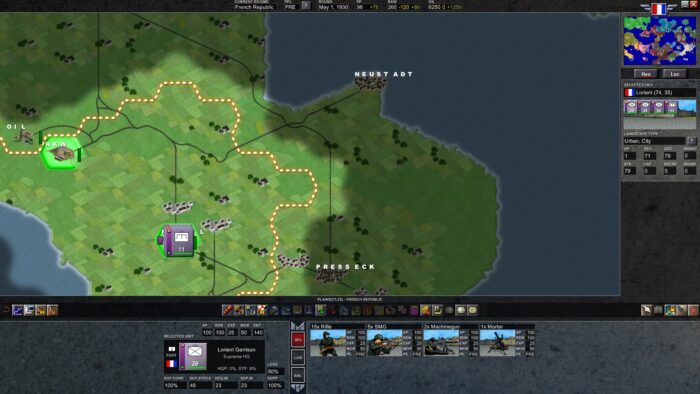
Almost the granddaddy of Vic’s work: Advanced Tactics Gold. The graphics, AI and features have developed further in his later games, but it is still a good game and easy for new or casual gamers to get into.
GH: Vic, tell us about you. What started your interest in gaming, why did you decide to become a wargame developer, and how did you get into wargame design in the first place?
VR: The origins of my interest in gaming are lost in the mists of time. But my family’s Amiga 500 and my grandparents’ humongous encyclopaedia on the second world war must have had something to do with it. I never took a conscious decision to become a developer, it just sort of happened. What started out as a hobby with the freeware title People’s Tactics became a more commercial and full-time endeavor as time went by. I quit my last non-game job in 2012 and emigrated to France in 2014.
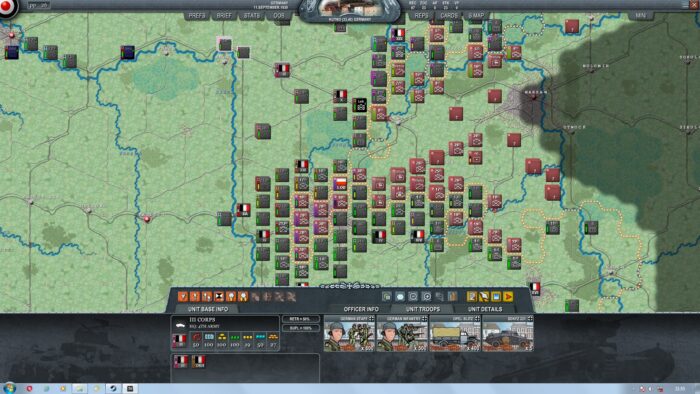
The next game after Advanced Tactics was Decisive Campaigns: Warsaw to Paris which took the AI and the graphics especially up a noticeable notch. In this game the Poles have fallen back to defend Warsaw allowing me a VERY rapid advance, but the difficulty of having to break through a lot of units if I want to have any chance of a win within the game time limits.
GH: You have been designing games for many years now. Which game have you most enjoyed designing, and what are the reasons for why it means that to you?
VR: Enjoy? As in what did the developer enjoy?
I might actually have enjoyed designing the android game Small General the most. It just took me a few weeks to make that game and I had a lot of fun simplifying all my previous rules into the essentials.
Now do not get me wrong. Small General was probably my worst game. But the fact I enjoyed it says something on my work on other titles. Shadow Empire for example took me over 4-5 years to finish. It’s hard to stay motivated for such a long period of time and not always an enjoyable experience. Hence my vote for Small General as most enjoyable design experience… It was quick, simple, fast.
I don’t want to do a quickie again for a future product, nor a simple one. I like the idea of designing a title that will “streamline” my previous work.
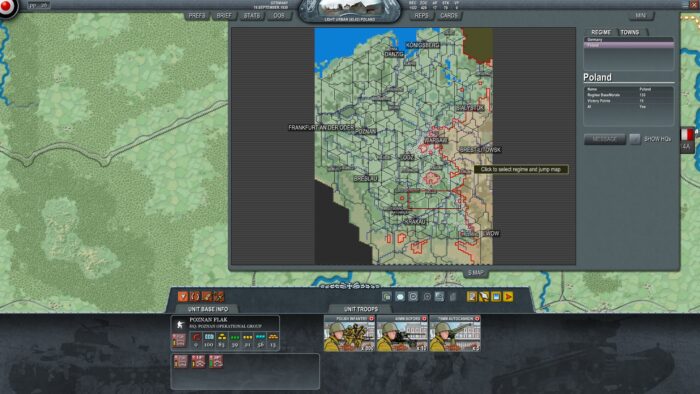
8 days after my earlier advance, I have isolated virtually all Polish units and am driving very close on Warsaw. Time is my enemy if I am to win. A nice feature of the game start is all the different strategies that could have affected the campaign like the British landing in support of the Poles on the Baltic Coast, or Stalin breaking the Molotov-Ribbentrop Pact etc.
GH: Do you have any personal favorite games? What inspiration have you drawn from them and how far have they influenced your design style?
VR: My days of heavy gaming are in the past… 12-years playing Grigsby’s War in Russia in a dark room till midnight…. and that probably shows in my designs. I probably have a tendency to design games that have a retro-feel because my best gaming years took place in that time period that is now considered retro. I am honestly truly allergic to 3D games, as well as coding them (turns out I am really not good with 3d math).
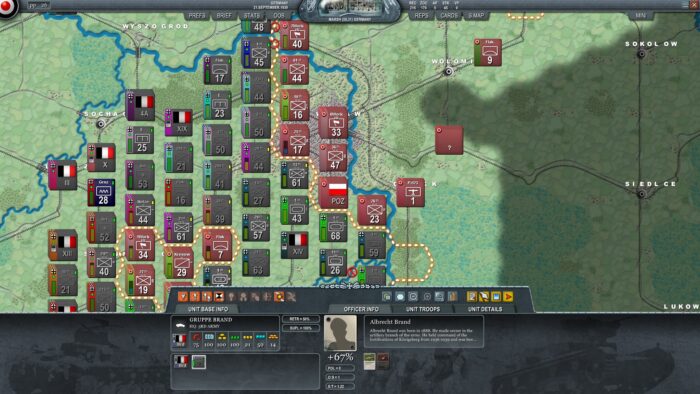
One turn away from the end of the game and I’m two hexes away from Warsaw… this is sooo frustrating. Note the officer of the formation has tactical cards that can be played to enhance some of his forces for a turn.
GH: When your original Peoples Tactics was first released it was a ground breaking indie game with a unique style for the wargame community. The basic mechanics later enhanced and updated when we saw your first mainstream published game Advanced Tactics (and later Advanced Tactics Gold). Tell us about what inspired you to create Peoples Tactics in particular, and the design philosophy behind it?
VR: That’s a long, long time ago… What I remember is that I really liked playing hot-seat Strategic Command with a friend of mine and wanted to create a game like it, but set on a procedural map, much like in Empire Deluxe. I think Hubert Cater (of Fury Games, Strategic Command titles) inspired me to make my first computer game.
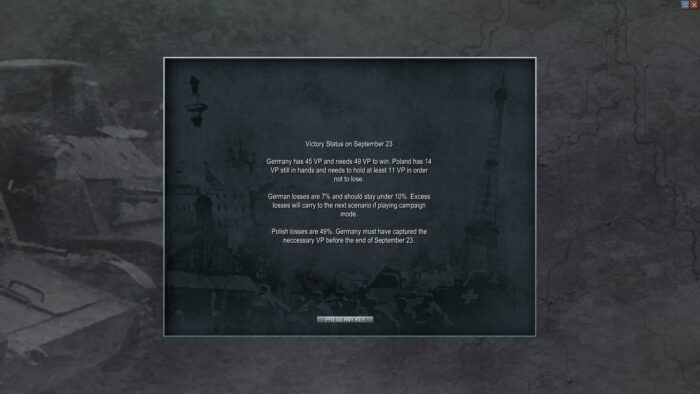
One hex from Warsaw, having given my best! The Reich will no doubt be displeased even though the delay will not be much… I’m reminded of metal band Sabaton’s “40:1” track about a small unit of Poles delaying General Guderian for three days despite overwhelming forces at his disposal. Some consolation there!
GH: From Advanced Tactics through the Decisive Campaigns series and the sci fi Shadow Empire, your games have steadily evolved – sometimes dramatically – in terms of the game mechanics, subject matter and art style. By way of example, your latest game Decisive Campaigns – Ardennes adds a distinctly more tactical flavor to your style in games. Have you now reached a sweet spot in game mechanics or do you intend to continue innovating further? If you have not yet reached the “holy grail” of your perfect game system, then what sort of ideas for game mechanics are you thinking about for the future? I appreciate that there is a lot of value and success to your current game system already which might mitigate as a proven success against an entirely new concept. All the same, might you experiment with something radically different?
VR: I think the time is nearing where I have to “streamline” all my previous efforts into a new game engine.
That being said I also like the dense, tried and tested rules that animate my current games and I do not see the Decisive Campaigns engine retiring anytime soon. The latest entry in the series, Ardennes Offensive, reinvigorated the game systems, making them more fun and dynamic. At the same time the ambiance has been improved by paying more attention to graphics & music.
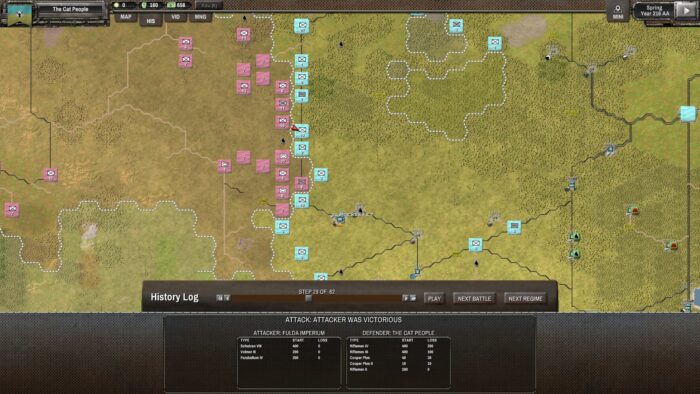
Welcome to Shadow Empire. I spent days playing this before I got a good grasp of the more advanced mechanics of this game, as it has a massive learning curve. The game has almost everything: politics, an outstandingly deep logistical model, economics, research, customizable units etc. The basic mechanics for combat/movement are all there from the earlier VR Designs, but so much more has been added. A warning: I was almost put off by the learning curve, but it’s really worth sticking with it. The game is generally slow paced at the start to mid game and with a big learning curve, so some players may be put off by that. However, there is just so much going on that I really found it that “just one more turn” type of game.
GH: I know that for years you have been deeply committed to the gaming community who play your games and you are willing to listen both to praise, as well as criticism. How has this impacted on how you move your projects forward? Does it influence the subject matter of new games, or do you prefer to take your inspiration from other interests and sources?
VR: Yes it is very important to have a clear picture of what worked well and what did not. I believe in recombining the good parts, removing the bad parts and re-inventing the rest where possible.
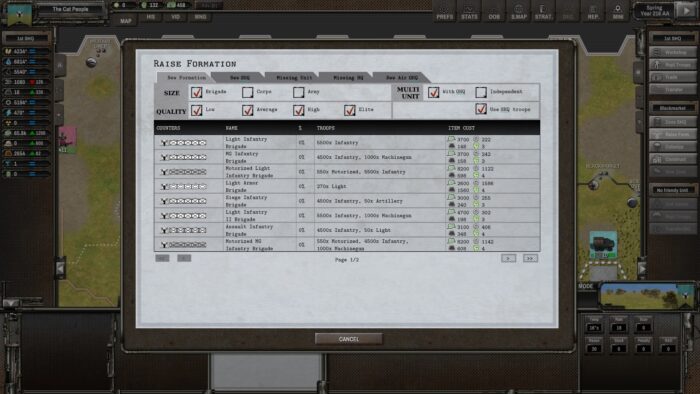
Choose your style of warfare and build your armies accordingly. Everything is customizable, and you can also add leaders, independent unit attachments etc to a formation.
GH: Shadow Empire in some respects is a big departure for you. In addition to the game not being historical, in comparison to the Decisive Campaigns series, but it contains a massive amount of depth including role playing elements. It also had a major development update making provision for air forces, which was not included in the initial release. Interestingly, there is also no provision for naval forces. Will this aspect be added in the future? Please tell us about your inspiration for and thinking behind the game. Please also tell us about why you added the addition of air forces, but not navies (perhaps relevant particularly for the Medusa, Hydra and to some extent Boreas class planets)?
VR: I have just started work on the navy forces. Bottom line why I am only getting to it right now is time availability. I am a one man army and can only do so much per day. That being said, the game is great without navies. Having navies is not even my personal reason for putting navies in the game. What I really want is the procedural planet generation algorithm to be able to run unchecked and create everything from near-earths to water worlds.
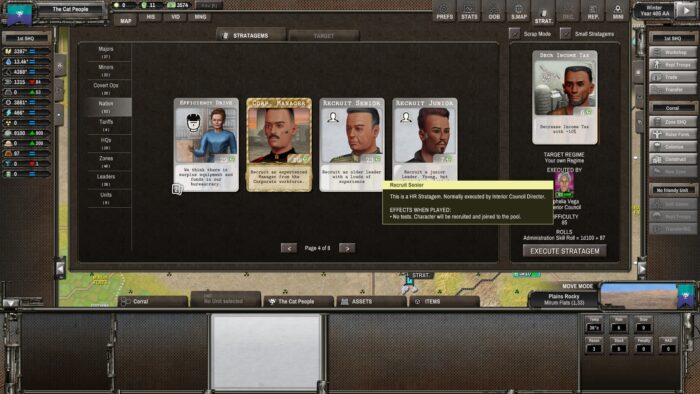
Stratagems allow the player to use political capital in the form of political points to influence diplomacy, local zones, the military (units, leaders, formation doctrine, etc.), the public/private sector economy, intelligence networks and operations, etc. In my opinion the depth of this game is outstanding, but it is not for the casual gamer.
GH: Now that you have produced Shadow Empire – a game in a totally different milieu to your usual historically based games – do you plan to surprise us with other very unexpected and in my view quite inspired ideas? Is it that Shadow Empire is a one off or has it opened your mind to continue and develop unusual game ideas (in addition to historically based games)? For example are you inspired by Shadow Empire to create games in fictional sci fi universes such as Dune, Star wars, fantasy, or to create colonisation and expansion style wargames whether historical, fantasy or sci-fi?
VR: Well…. if Shadow Empire has shown me one thing, it is that a game can succeed by doing things differently than the competition. There is nothing like Shadow Empire in 4X land and it is that “being-different” thing that did the trick for me and for many of the players.
If I can disclose one thing on the game after Shadow Empire it would be that it will be something different all over. However, do expect hexagons and counters. I start to believe I am married to them and that they are something I am not ready to part with.
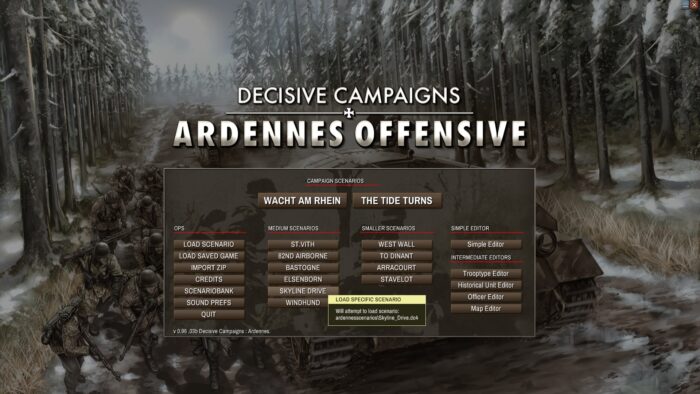
DC: Ardennes Offensive is Vic Reikersz’ latest release. It offers two grand campaigns and ten smaller scenarios. As with all his games it is highly customisable through the editors provided. Compared to Shadow Empire this game has much faster gameplay and is much easier to get into. The tactical nature of the gameplay represents a departure from the scale of Vic Reikersz’ other games.
GH: What would you say has been your biggest design challenge in general? With the Decisive Campaigns series in particular what issues concerned you most to reflect their unique characters? How did you resolve those issues?
VR: I’ve got a bad memory for remembering exact issues. Sorry there. What I can say in general is that most of the time I do not design around (and thus avoid) issues and tend to attack them head-on. With sheer willpower most obstacles can be tumbled by just applying enough force often enough.

Fans of the Decisive Campaigns series will instantly appreciate the improved graphics and updated gameplay. One new feature shown here is the ability to opportunity fire during the opponents turn, reflecting the emphasis towards tactical combat from more abstract strategic or operational combat seen in earlier games.
GH: I know that you work very hard on the artificial intelligence (AI) in your games. Tell us about that. What sort of considerations do you apply in designing an AI? Tell us about your best and worst learning experiences with designing an effective AI.
VR: I think the DC: Barbarossa AI is my second best AI. The latest DC: Ardennes Offensive is the best AI I ever did. What’s important for making a really good AI is to have limited systems that the AI needs to use and to take the time to play your own a lot and keep making little (and bigger) changes until it plays almost like myself. One tool any AI designer should use is to make the AI play itself. This way you can get some sleep while you can judge the long term performance of the AI the next day.
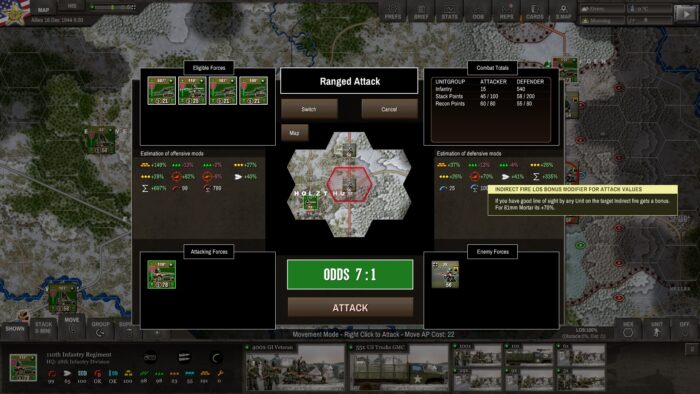
My infantry pound a unit of German infantry using their mortars, rather than attack them at much worse odds. Pressing attack resolves the combat …
GH: The moddability of your games has been a feature from the early days enthusiastically embraced by the VR Designs. Do you plan to consider integrating, and crediting some of the most popular enhancing mods directly into your games – as has been done with some other developers?
VR: No specific plans here.
GH: Now that Decisive Campaigns: Ardennes is complete what is next for VR Designs? Do you plan any new Decisive Campaigns games following up Ardennes and further develop the tactical element or other features? Will you take another leap into the imagination like Shadow Empire or will you surprise us and do something completely different?
VR: Ardennes Offensive was part four in the series, so yes there is a good chance there will be a part five… I especially like the 1km/hex + battalion level units scale and gameplay.
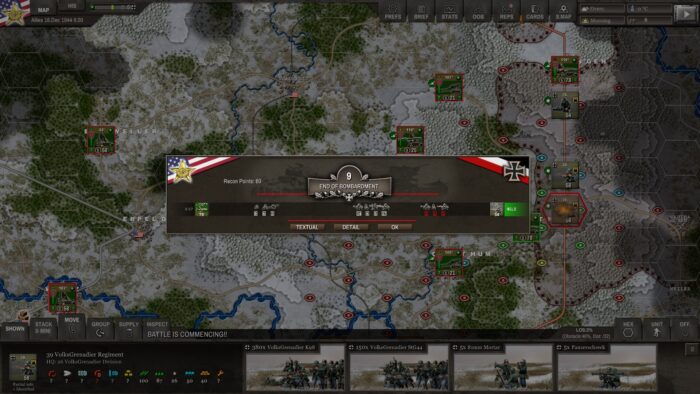
… And the Germans take 20 infantry casualties (two squads) and a mortar! I keep telling myself it all adds up!
GH: Is there anything else you think our readers should know about VR Designs and specifically about your latest game Decisive Campaigns – Ardennes?
VR: It’s fun, it has good and fast AI, deep detailed rules (that are optional to fully understand) and it is easy to play. It is nowhere near causing the excitement that Shadow Empire did, but it is one hell of a solid historical wargame if you ask me.
GH: If you could make any game you liked – free of any commercial considerations – what would it be?
VR: Probably the same as today. I like making 4X games and wargames and mixing them up. Though honesty obliges me to confess I have always had this weird itch to make a retro CRPG and I did not do so out of time investment vs. risk vs revenue considerations.
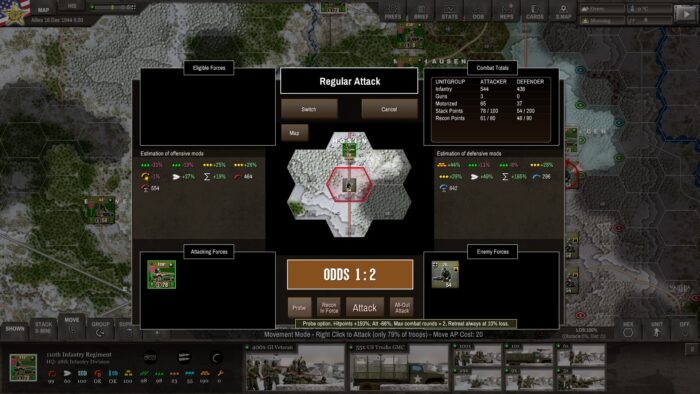
On the flip side engaging in a fire fight with fresh troops is far less likely to work out with little or no casualties. That said the different combat stances in the game can affect how many casualties get taken. In this case, the probe attack by my GI’s casualties was low, but we still lost three times that of the Germans at 1:2 odds.
GH: I’ve tried to cover a wide variety of topics, but is there anything else I might have missed that you would like to share with us?
VR: DC: Ardennes Offensive has completely new simple and intermediate editors that make it like at least a hundred times easier to design your own scenarios than with previous DC titles.
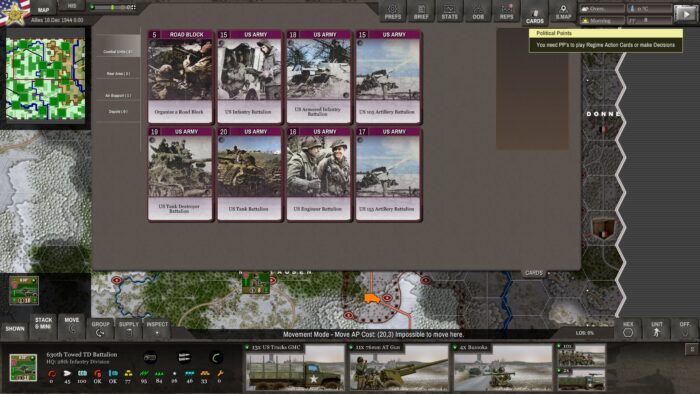
As with many of Vic’s games, political points ( PP’s) can be used to advantageous effect, in this case being the mechanism to provide added reinforcements.
GH: Vic, I really appreciate you taking the time and trouble to answer my questions and sharing your thoughts with Grogheads.com
VR: Thanks for your time and your readers’ time as well. Grog on!
Chat about it below, or in our forums, or hit our FaceBook page >>


